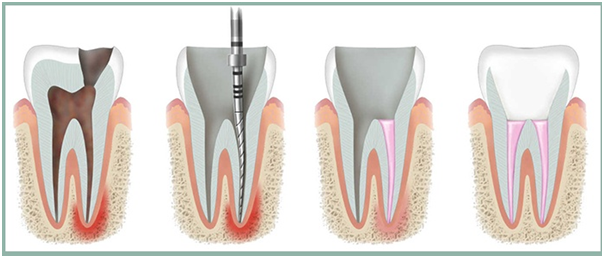
Answer: Root canal treatment, also known as endodontic therapy, is a dental procedure to remove infected or damaged pulp from inside a tooth. The tooth is then cleaned, disinfected, and sealed to prevent further infection.
Answer: A root canal is necessary when the pulp inside a tooth becomes infected or damaged due to deep decay, a crack, or trauma. Symptoms may include severe tooth pain, swelling, sensitivity to heat or cold, or an abscess.
Answer: Modern root canal procedures are not as painful as many believe. With local anesthesia, the procedure is relatively painless. Some discomfort may be felt after the treatment, which can be managed with over-the-counter pain relievers.
Answer: A standard root canal procedure usually takes about 60 to 90 minutes, depending on the complexity of the case. In some instances, multiple visits may be required if the infection is severe.
Answer: The main alternative to a root canal is tooth extraction, followed by a dental implant or bridge to replace the missing tooth. However, saving the natural tooth with a root canal is generally preferred whenever possible.
Answer: The cost of root canal treatment varies depending on the tooth affected, the complexity of the case, and whether additional procedures (such as a crown) are needed. Many dental insurance plans cover part of the cost.
Answer: The most common causes include deep cavities, repeated dental procedures on a tooth, cracks or chips in the tooth, and trauma that damages the tooth’s pulp. These factors can lead to infection or inflammation, requiring root canal therapy.
Answer: While root canal treatments are generally successful, there is a small chance of failure if the infection persists or a crack in the tooth goes unnoticed. In such cases, retreatment or endodontic surgery may be necessary.
Answer: After a root canal, maintain good oral hygiene by brushing and flossing regularly, and avoid chewing hard foods until the crown is placed. Follow-up visits with your dentist are important to ensure the tooth heals properly.

